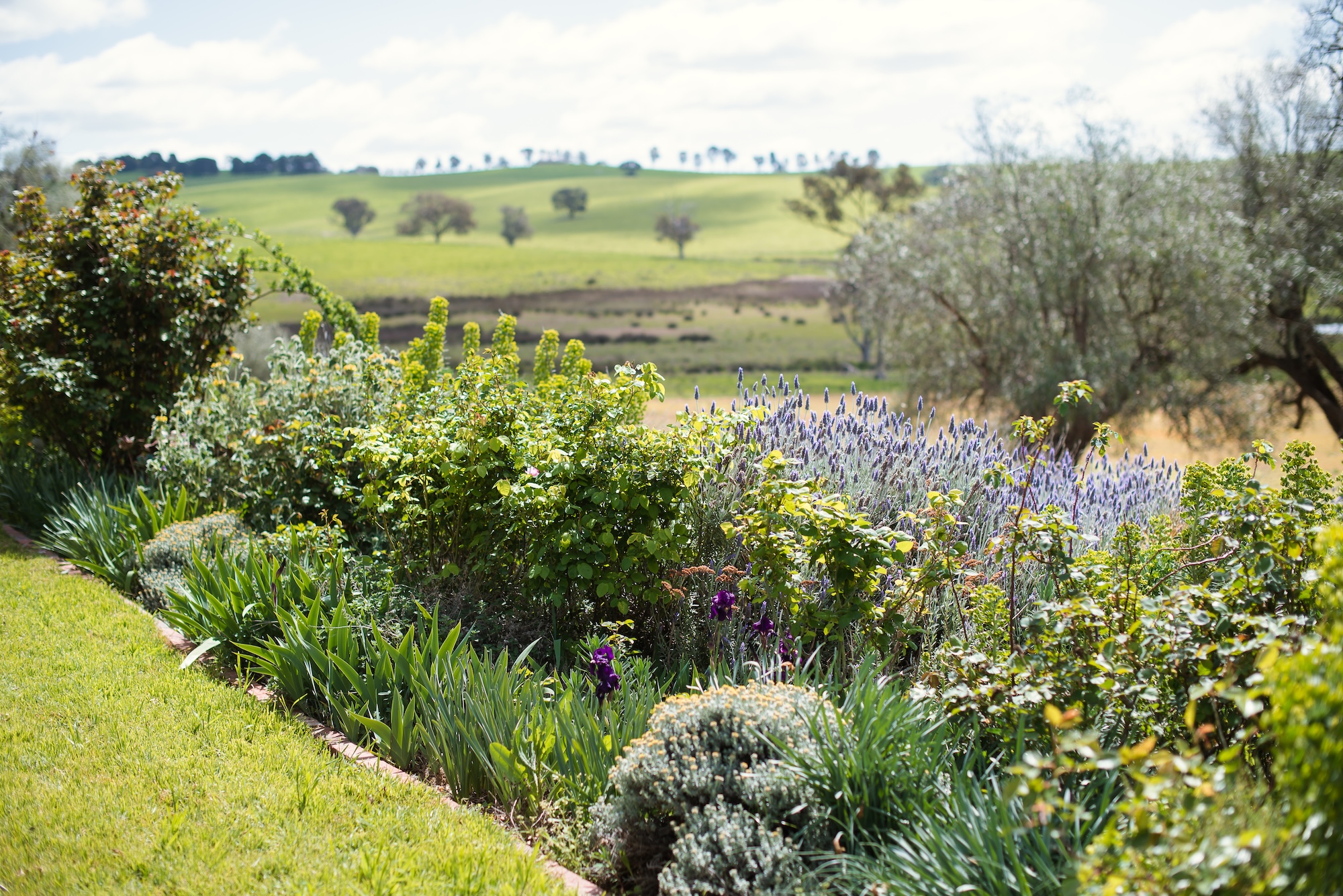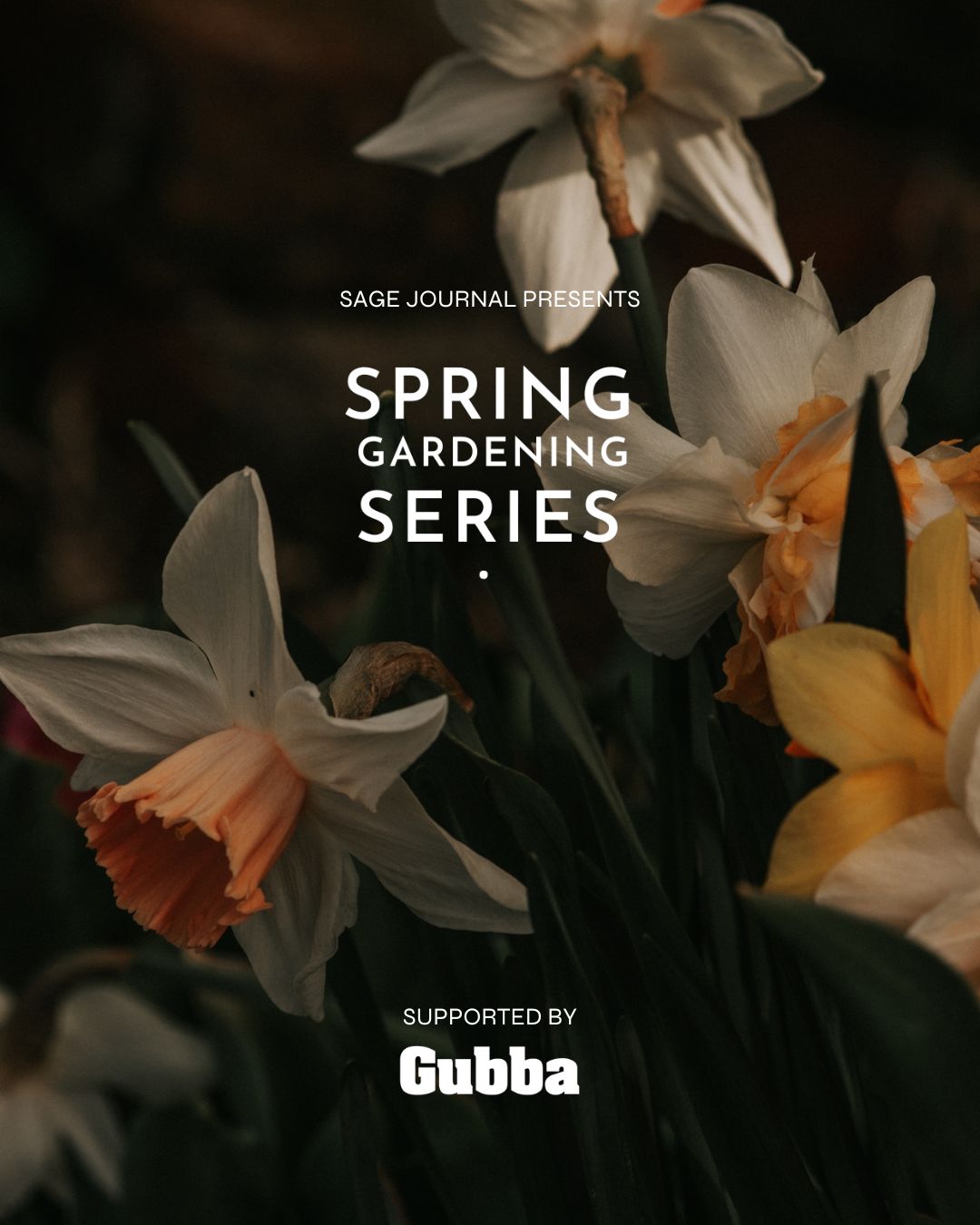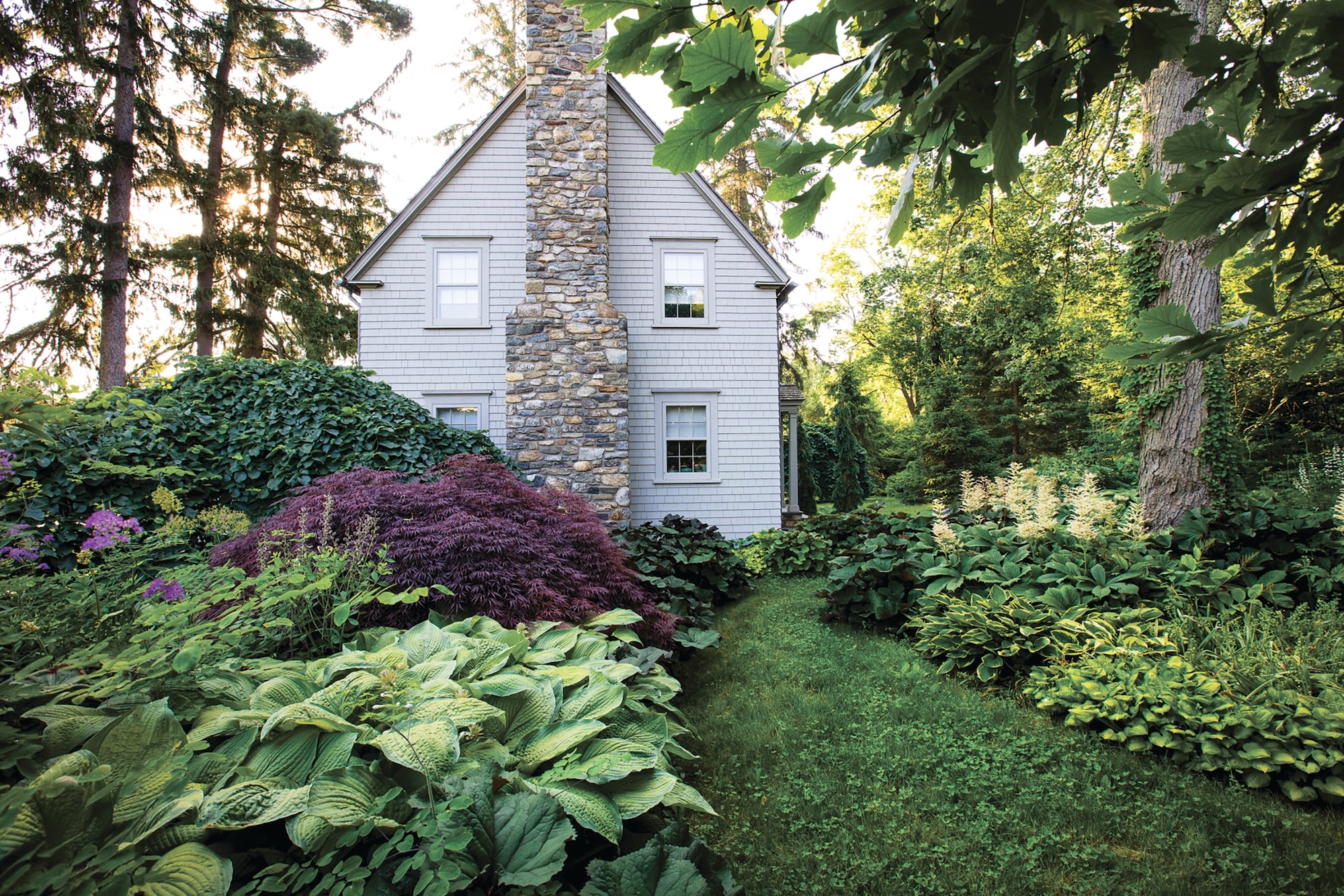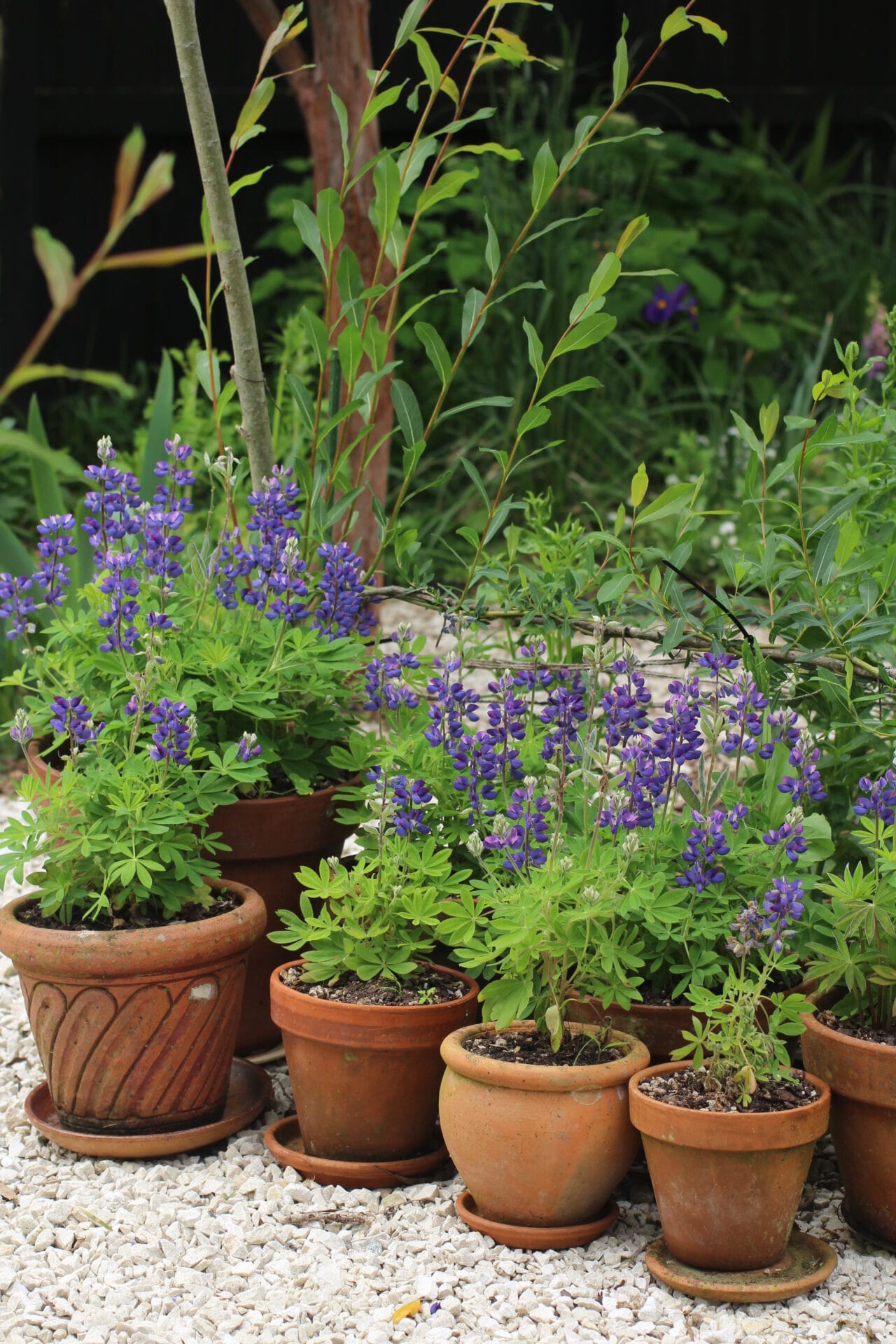Learn how to design a thoughtful planting palette using plant forms, foliage contrast and structure to create a beautiful, low-maintenance garden that suits your style and climate.
The 2025 Spring Gardening Series is supported by Gubba Garden Store.
No matter what you call it – the softscape, planting palette, plant schedule, plant list or plant inventory – creating the right combination of plants is the most important part of any garden.
This article, written by landscape designer Glenice Buck, explores the principles of designing a garden well. Just in time for spring gardening!

Start with the practical: Soil, sun & water
Whilst I am designing gardens for my clients, I always have a long list of plant names swimming around in my mind – options that could form part of my plant list for my client’s new garden.
The hard part is reducing this list down to the top plants that are best suited to that outdoor space. I think with experience, you do learn what to eliminate and what to include. It is a process, starting with the practical considerations of the site such as soil, aspect, climate and water availability.
If you love gardening, you will most likely still have a very long list of plants you could possibly use. Ideally, I feel a home garden is better with a limited number of species – so you will still need to edit this list down.
You don’t need your garden to be a botanical garden of plants. You need each of your plants to do the jobs they are selected to do, and to work with other plants to create the style that you are aiming for.
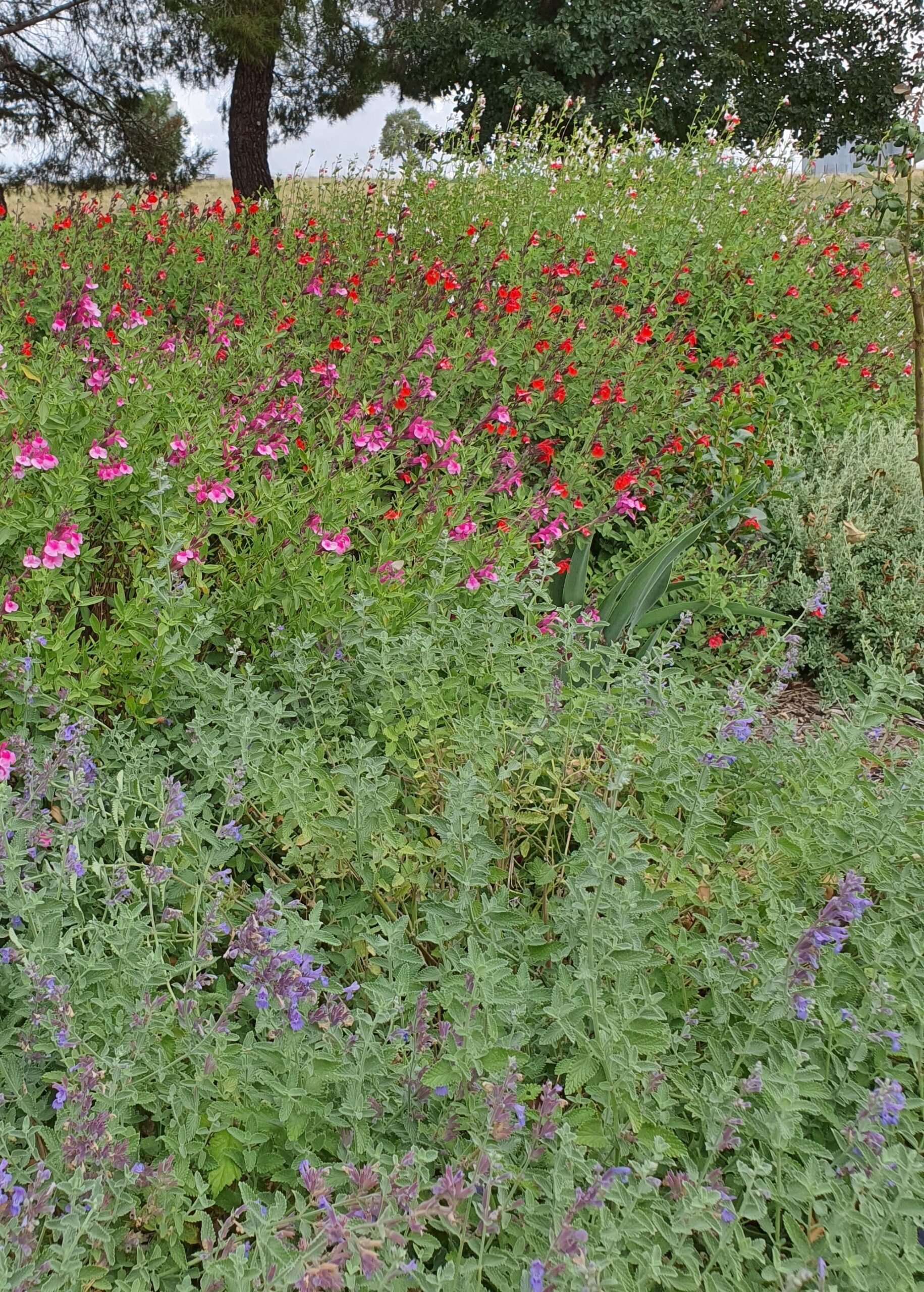
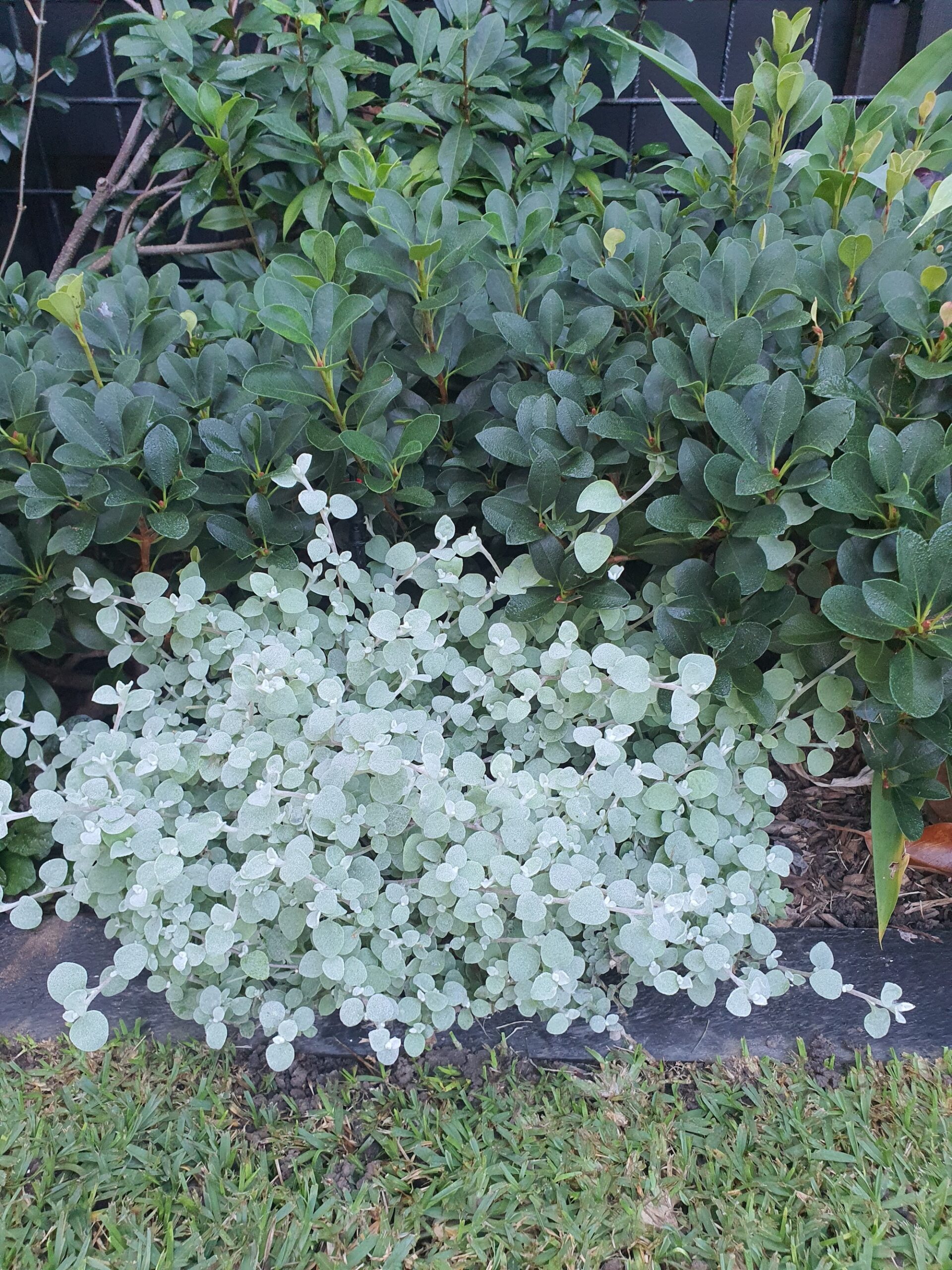
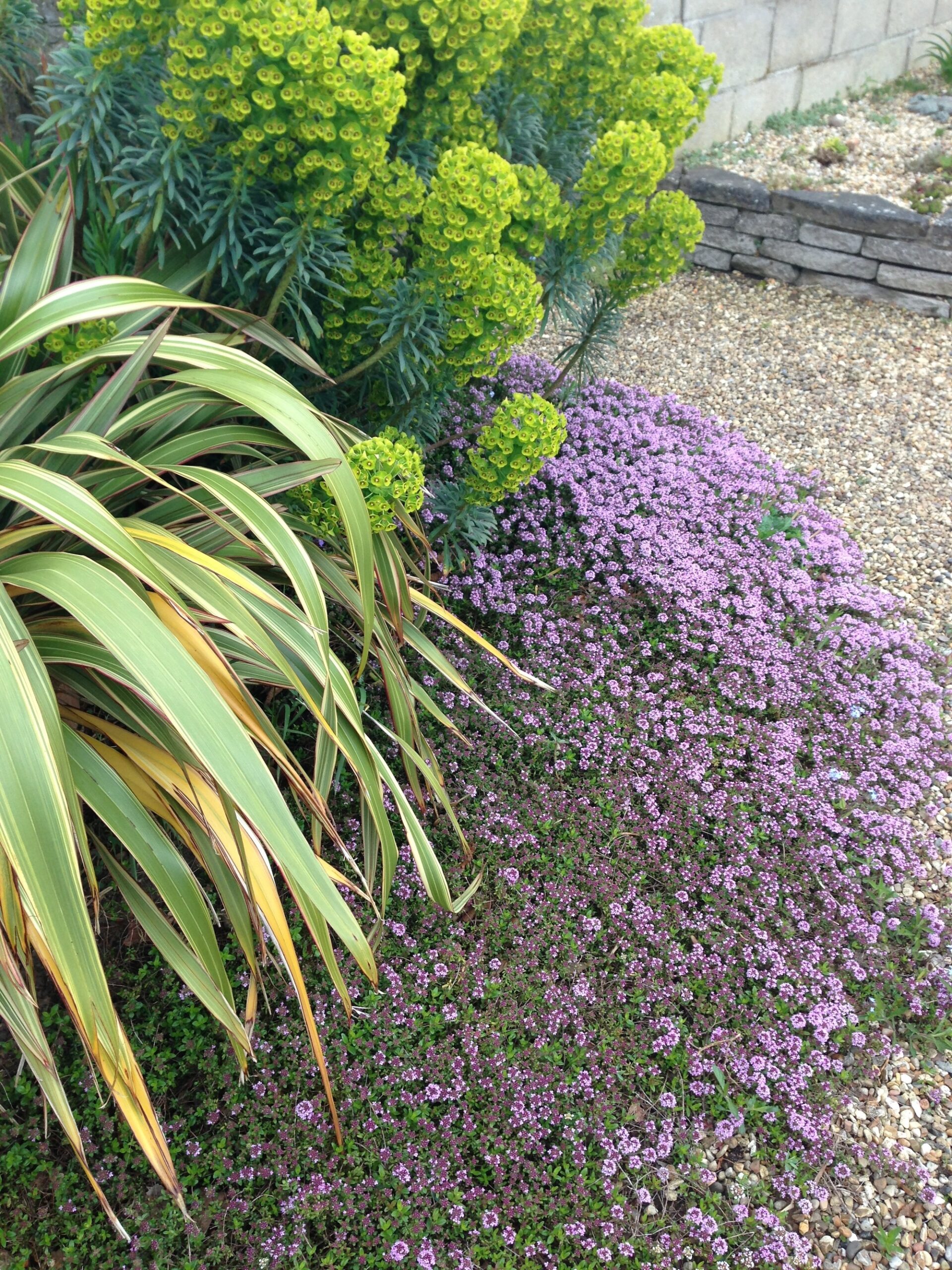
Think in plant shapes & roles
Once I understand the practical elements of the garden, I will have a clear idea of what plant species will survive in the location.
When it comes to combining the plants, I tend to look at plants as all different shaped building blocks. I consider their overall habit or the block shape they will form.
7 plant shapes I use most often in garden design
- Prostrate ground covers like Myoporum, Vinca or Convolvulus
- Soft, rounded mounds like catnip, Helichrysum or Santolina
- Rosette-forming from the base like statice, Bergenia or Hosta
- Rounded, bun-shaped plants like salvias or lavenders, or plants that can be pruned to form this shape – such as Teucrium, Westringia, rosemary and Phillyrea
- Strappy-leaf or architectural-shaped plants in varying heights – from Lomandra, Agapanthus, to ornamental grasses
- Softer-shaped, more ephemeral plants that I tend to see as seasonal fillers – like butterfly bush, Penstemon, Phlox and Rudbeckia
- Upright branching shrubs like bush roses

Layering larger forms: Climbers, shrubs & trees
Continuing from there, of course you have climbers, larger shrubs and trees that all have their own form and different habits again.
Depending on the size of the garden, I will select at least three of these different building blocks to use together. I always consider, first, their foliage colour, foliage shape, foliage texture and foliage size; then their mature height and width; and thirdly, their flowering colour and the time that they flower.
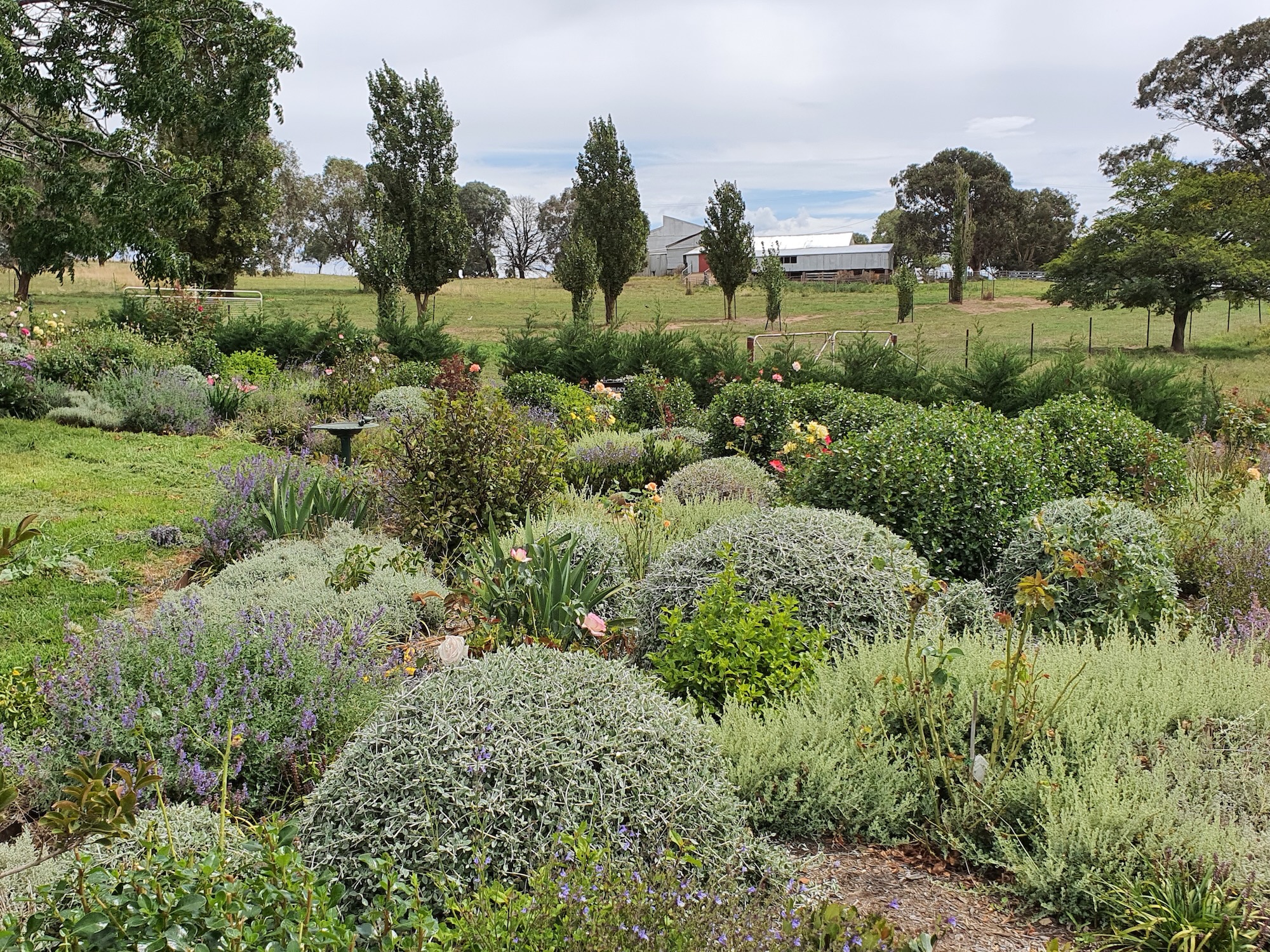

Combining plants for texture & contrast
It is about combining these building blocks in a way that gives you the overall aesthetic feel that you want. You always need to consider their mature width and height when combining plants, so that they don’t outgrow each other.
I love using a combination where the foliage really contrasts – for example, a dark green, rounded-leaved shrub such as Raphiolepis ‘Oriental Pearl’, with a strappy mid-green leafy grass such as Liriope ‘Munroe White’, planted next to an ornamental grass with a soft golden feathery flower such as Miscanthus ‘Adagio’.
Another combination would be an upright, column-like conifer such as Cupressus glauca, with a soft, mounded, silvery-leaf shrub such as Artemisia, and a wispy, ephemeral perennial like Verbena bonariensis.
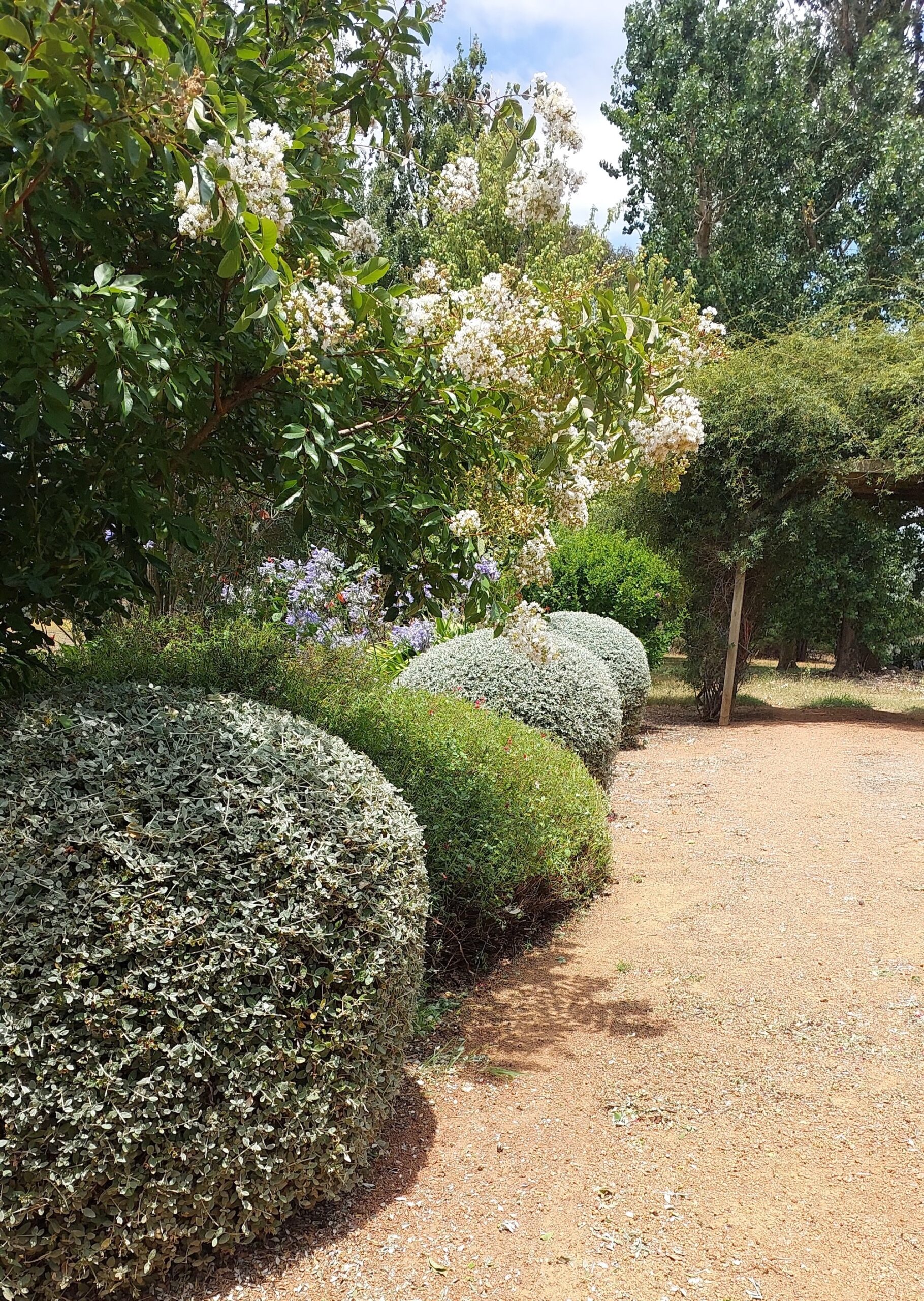
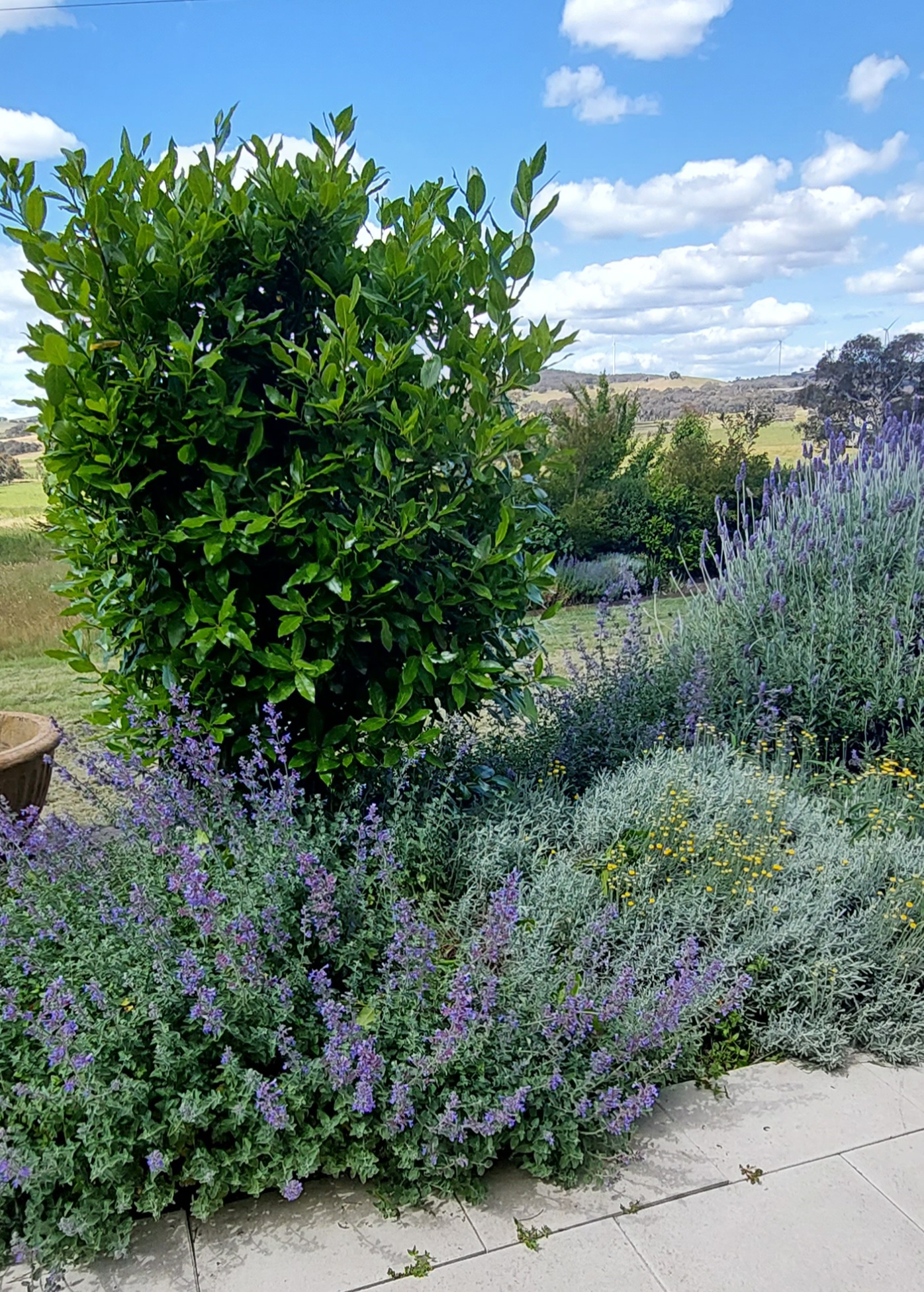
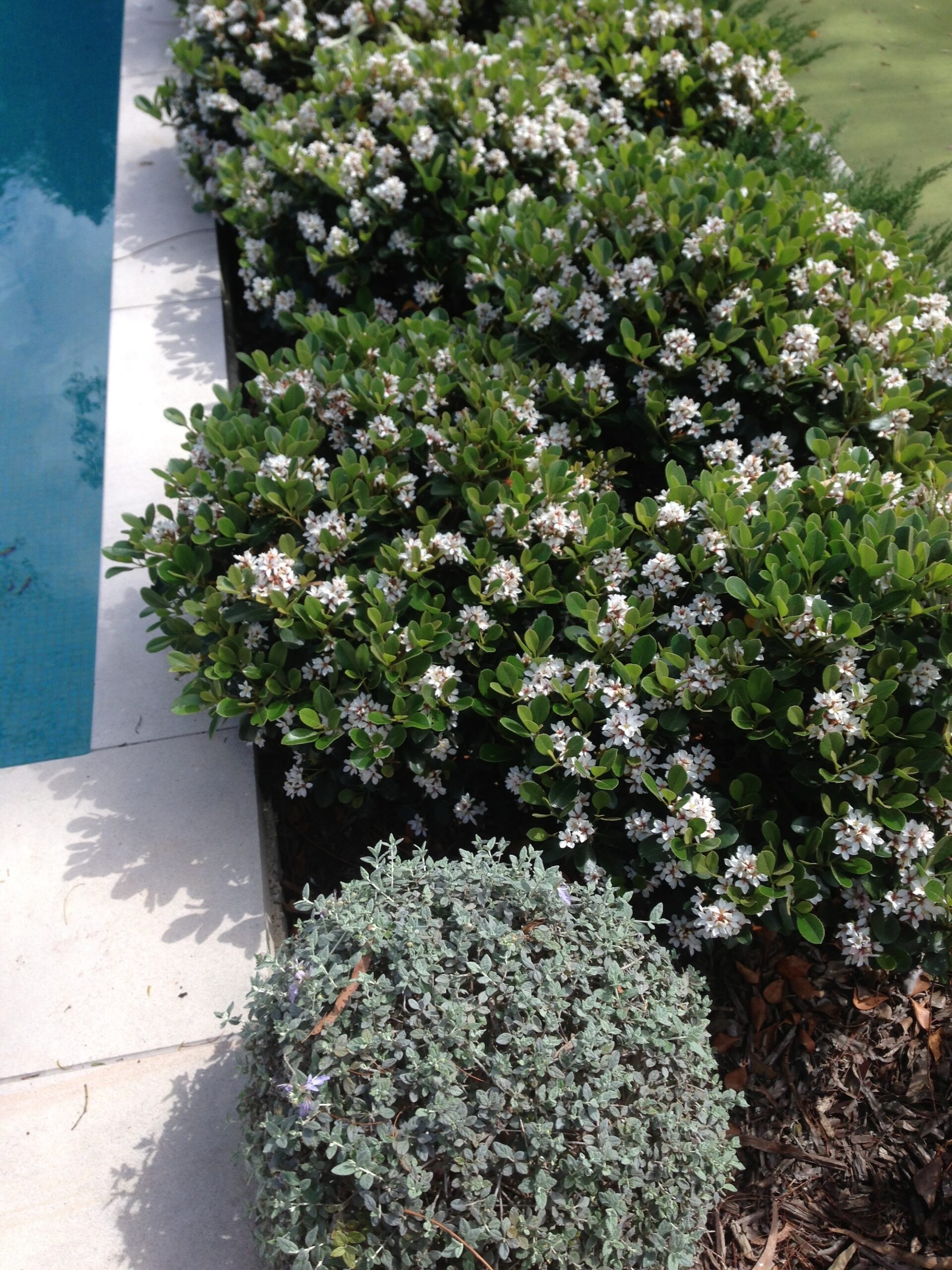
Designing for feel: What style will your garden be?
Planting the different building blocks of plants next to each other will give interest and form the aesthetic feel of the garden.
When you start to consider the planting list, you need to decide what you want your garden to feel like. What will the style of the garden be? Will the garden have a structured formal look? Will it be a softer, more informal cottage feel? Or will the garden have a contemporary, modern edge?
The material selection and layout will of course add to each of these styles – but the planting palette will be the finishing touch that gives the space its overall aesthetic.
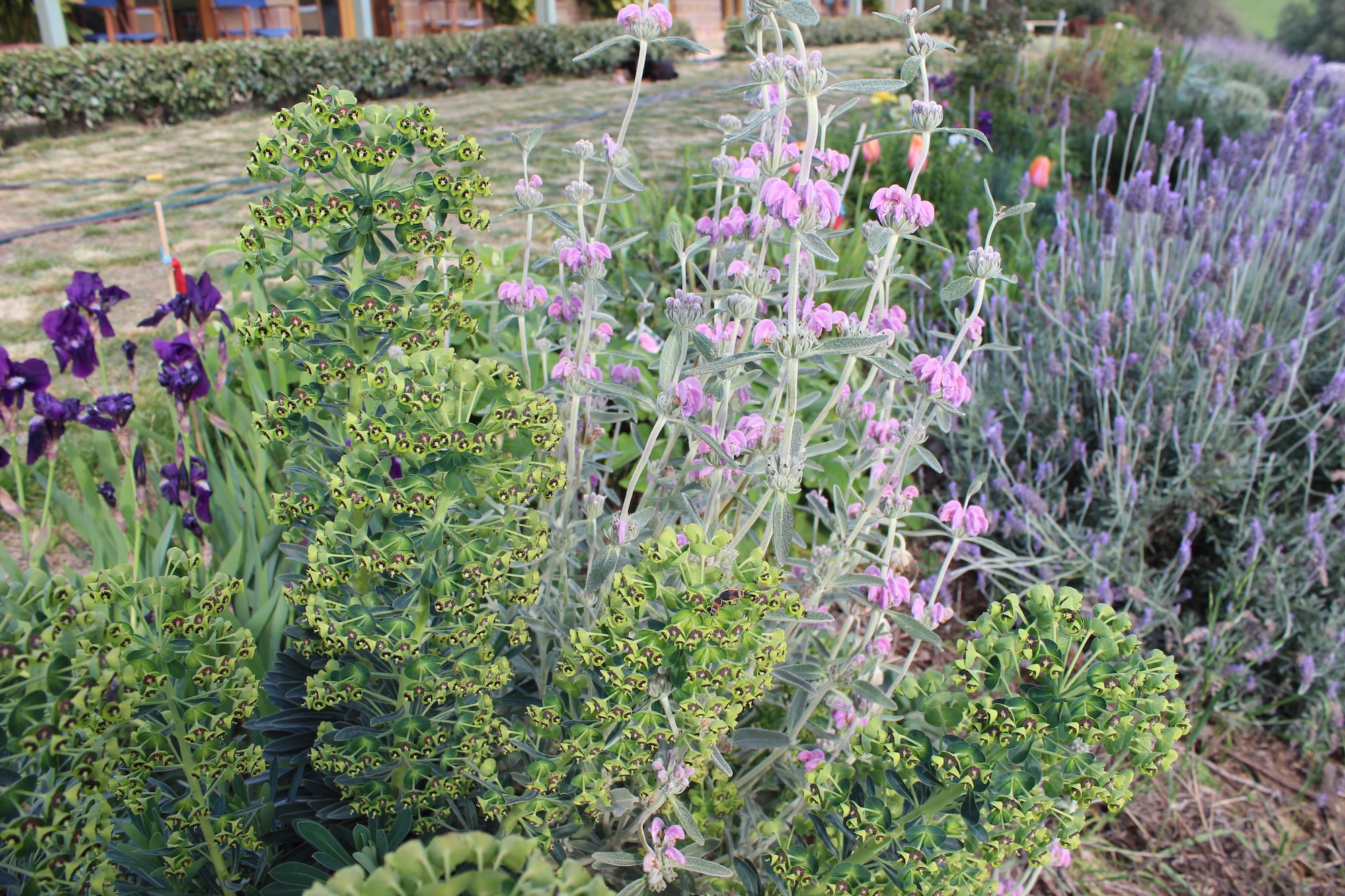
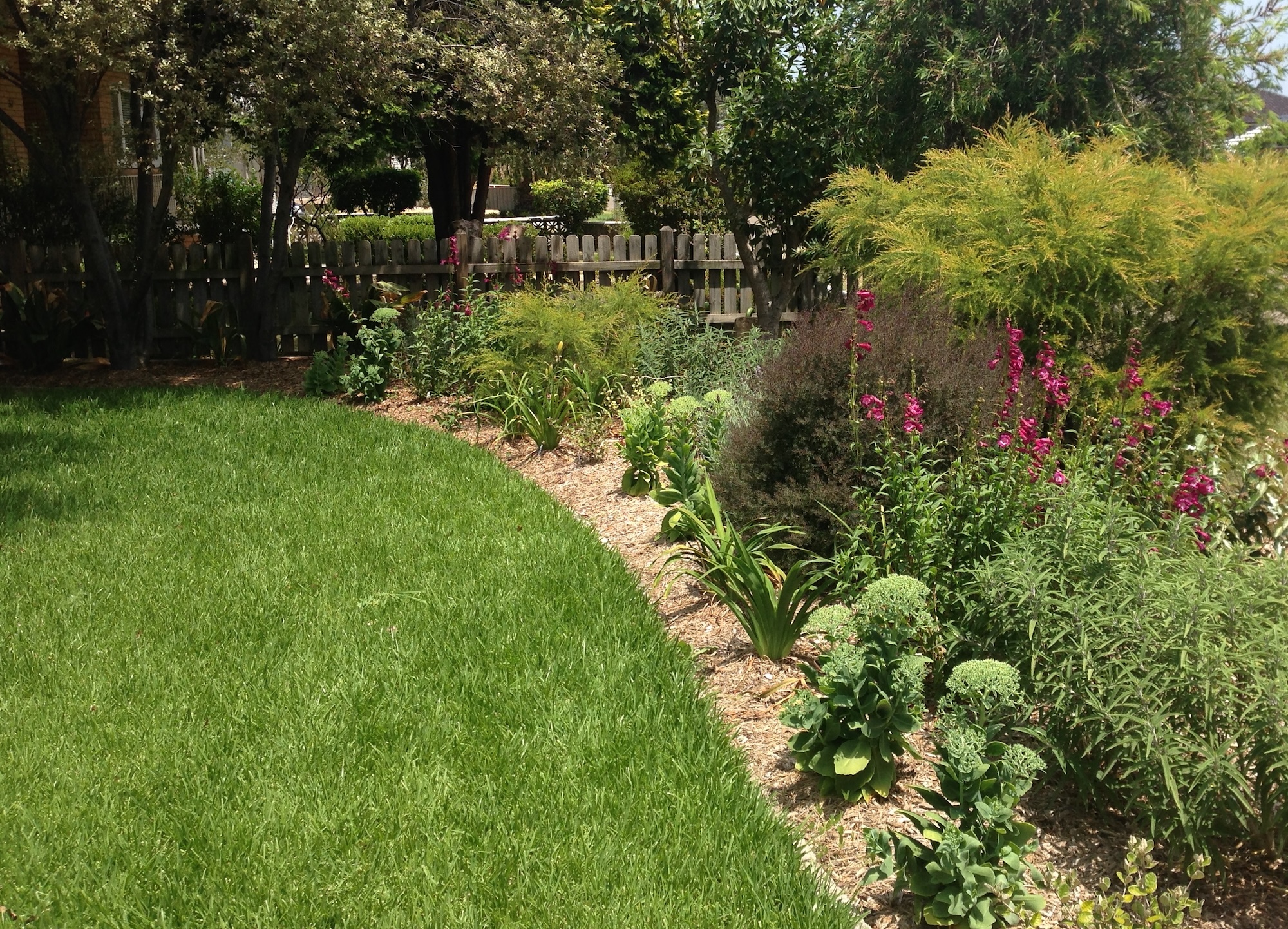
Key planting recommendations
Choose plants that thrive in your region
- Select plants that are tried and trusted for your area. These are the ones that will be drought and frost tolerant.
- If you’re new to an area, look around at neighbouring gardens, parks or visit a local nursery.
- Seeing the plant in the flesh makes a big difference.
- You can still try unusual plants – just trial them, and don’t rely on them as your garden’s backbone.
Plan for year-round interest
- Select plants for the interest they will provide – not just for their flowers.
- Look at their foliage shape, size, texture and colour.
- Consider their habit or form and how they’ll grow.
- Aim for a mix of deciduous and evergreen plants.
- Check flowering times so you have colour across all seasons.
- Include plants that will support your local wildlife.
Use repetition & mass planting
- Mass plant using a minimal number of species, but in larger quantities.
- Plant in odd numbers — singles, threes or fives.
- Fewer species means easier maintenance, as you’re managing fewer needs.
- Repetition in plant forms helps create flow and cohesion.
- Always plant in a triangular pattern unless forming a hedge – avoid planting in straight lines.
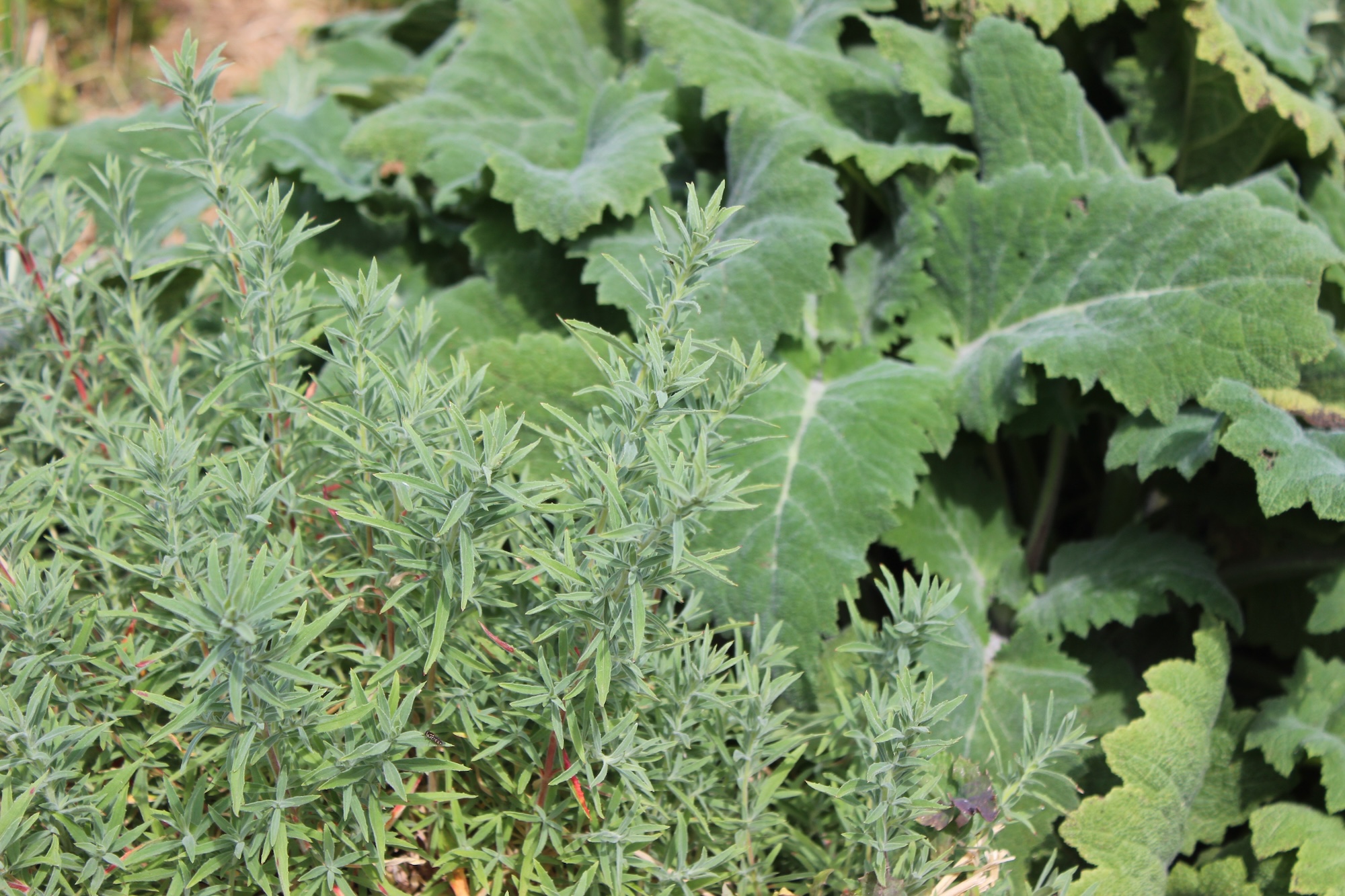
—
Trying to have a mix of forms, textures and growth habits is what creates a garden that’s both functional and beautiful.
By understanding your plants as building blocks — each with their own shape, texture and contribution – you can design a space that feels intentional, thriving and unique. Whether your style is structured or relaxed, a thoughtful planting palette is what brings it all together.
—


